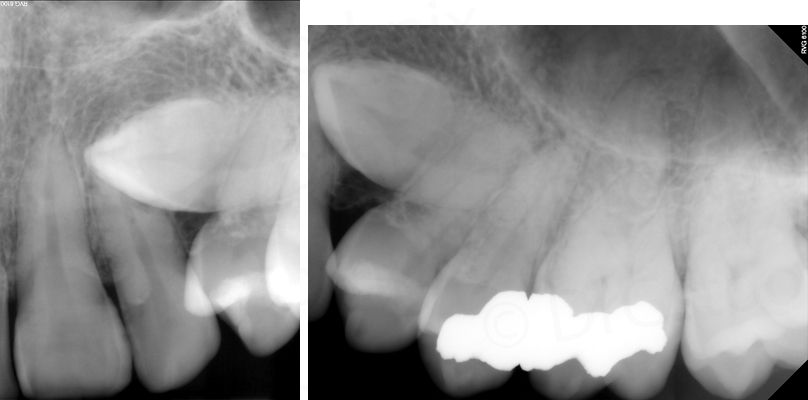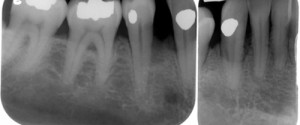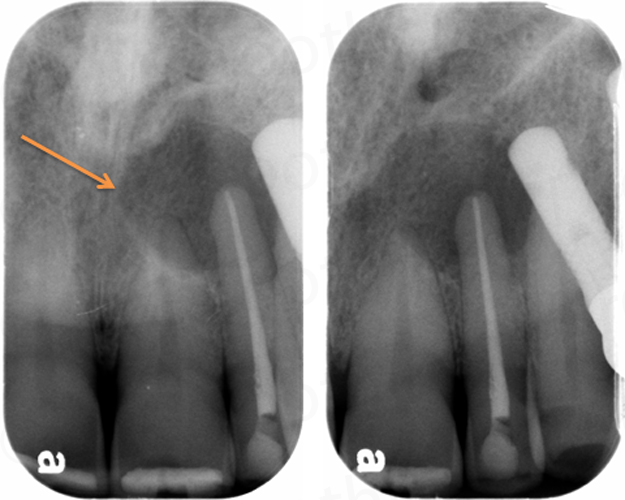I did not realize that the answer to the October 2014: Locate the Object was not out so here it is, a bit late. 😐
I’ll be going over both image shift and SLOB (Same-Lingual, Opposite-Buccal). .
Image shift
Before starting to use the image shift principle it is important to know/remember two key points
- Images move in the opposite direction from the movement of the source.
- Images of objects farther from the image receptor will move more (aka objects (images) more facial/buccal will appear to move more).
The first thing to do is pick a stationary object that is seen on both radiographs and appears to move in comparison to the impacted canine (#11). On these radiographs, we will use the left lateral incisor (#10). The most obvious angle change is the horizontal angle. Starting with the left central incisor/lateral incisor periapical radiograph and moving to the premolar periapical radiograph, the source of radiation (tubehead) moves posteriorly increasing the horizontal angle. According to point 1 above, this means the images move anterior.
Looking at the second radiograph (premolar periapical radiograph), we need to compare the image movement of the impacted canine (#11) versus the left lateral incisor (#10) to see which object moved more anterior following point 2 listed above.
The left lateral incisor (#10) appears to be more anterior on the premolar periapical radiograph meaning it is farther from the image receptor compared to the impacted canine (#11). This gives us an answer of the impacted canine (#11) being to the lingual/palatal of the left lateral incisor (#10).
SLOB (Same-Lingual, Opposite-Buccal)
The first thing to do is again pick an object with a known fixed location – the left lateral incisor (#10).
The second thing to do is determine which direction we are moving from the left central incisor/lateral incisor periapical radiograph to the premolar periapical radiograph and the answer would be – distal.
Lastly, on the premolar periapical radiograph determine what direction does the impacted canine (#11) appear to have moved in relation to the left lateral incisor (#10) – distal. Here is where the acronym comes into play. Did the unknown object move in the SAME direction as the radiographs or in the OPPOSITE direction? Our answer is – same and the acronym states that same is lingual, so the impacted canine (#11) is to the lingual of the left lateral incisor (#10).
Another case will be coming next month. If you have any questions or comments, please let me know below. Thanks and enjoy!



